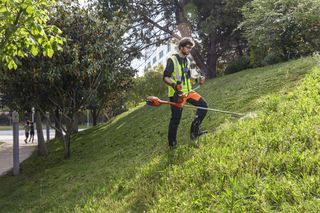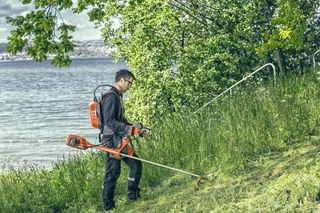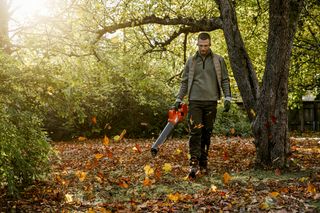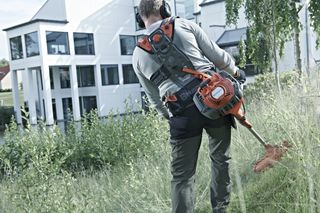
Prune plum trees – Our top tips for trimming plum trees
Do you need help pruning plum trees? Pruning is essential for trees to thrive and bear fruit. Read our top tips here!
Good shape for a young plum tree
In the first year, while the tree is rooting, there isn't much need for pruning. But in the second year, as the crown starts to take shape, it's time to begin pruning. Cut away branches that grow inward into the crown or compete with each other. Also, remove branches with sharp angles, i.e., branches that grow upwards rather than outwards, as they risk breaking under the weight of the fruit. During the tree's development phase, it's suitable to prune in late spring to stimulate shoot growth. See our range of pruners.
Older plum trees? Maintenance pruning will suffice
Older plum trees only need light pruning, known as maintenance pruning. This involves cutting away sick, damaged, and dead branches. The main structure of an old tree should not be tampered with – assuming the tree has been properly shaped from the beginning. The crown should be moderately sparse and airy as this lets in more light and helps prevent diseases.
When is the best time to prune plum trees?
It's advantageous to prune older plum trees during the summer, as they are otherwise susceptible to gummosis, a disease caused by bacteria. In the summer, the trees are most vigorous and better resist attacks by rot fungi, while at other times of the year, they go into a dormant state and become less resilient.
Care for the family tree
If you have a family tree, i.e., a tree where several different plum varieties coexist, it's important to keep track of where the different varieties are so you don't accidentally cut away a variety.
Pruning is simple – but keep this in mind
When pruning plum trees, it's important to use a sharp and well-cleaned secateur. It's also crucial that it is dry conditions so that no fungal spores enter the new cut surfaces. If the tree has diseases like fruit tree canker, the secateur must be sterilised between each cut to prevent spread. This can be done by dipping it in a small jar of methylated spirits between each cut.
When pruning, always make cuts just above an outward-facing branch or bud. The branch will continue to grow in the direction the bud points towards, and you want to avoid branches that grow into the crown or into each other. Do not cut too close to the bud, but also do not leave a long stub, or "coat hanger" on the branch.
5 tips for pruning plum trees
- Start pruning plum trees in their second year, once the tree has rooted
- Younger trees can be pruned in spring, stimulating shoot growth
- Older plum trees only need light maintenance pruning, preferably during the summer.
- When pruning trees, use a sharp and well-cleaned secateur
- Make cuts just above an outward-facing branch. Avoid "coat hangers"













